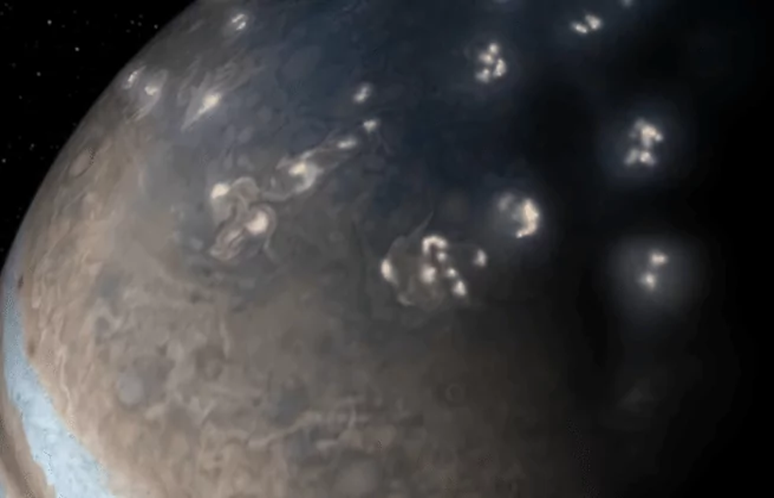Hurricanes around Jupiter's poles continue to amaze scientists with their strange shapes

The massive polygon-shaped cyclone systems at the north and south poles of Jupiter have left scientists confused about how to preserve their strange and fascinating geometries for years.
Powerful hurricane storms have remained inexplicably stable in their strange formations since the Juno spacecraft first discovered them in 2017.
At the North Pole of the gas giant, the spacecraft observed a massive hurricane surrounded by eight smaller hurricanes that appeared to be orbiting around it, and at the South Pole, there is a structure similar to hurricanes in the shape of a hexagon.
In their paper published in Nature Astronomy, the scientists, led by Andrew P. Ingersoll of the California Institute of Technology, revealed that they may have found some explanations for the strange phenomenon on the gaseous planet, the largest in the solar system.
Scientists, from multiple institutions in the United States and in collaboration with teams from France and Italy, have found that there is an "anti-vortex loop" between major hurricanes and smaller hurricanes, which keeps groups in their unique polygonal patterns, according to the new study. However, many questions remain about these storms.
The study says: "Since 2017, the Juno spacecraft has observed a spiral cyclone at the north pole of Jupiter surrounded by eight smaller cyclones arranged in a polygonal pattern. It is not clear why this formation is stable or how to maintain it.”
The team continued: “The individual polygons and vortices that compose them have been stable for four years since they were discovered by Juno. And the polygonal patterns rotate slowly or not at all.”
Scientists used a series of images taken by the Juno spacecraft to track the winds with the polar cyclone and two polar images, according to the study.
However, the scientists did not find what they expected based on “previous assumptions about dynamics” regarding the “expected signature of convection – a spatial correlation between divergence and counter-vortex.”
In this new effort, scientists have tried a new approach to explain how hurricanes stay in place for so long, and how they do so without changing their position or shape.
The team's work involved analyzing images and other data from Juno, looking specifically at wind speed and direction. Then they took what they learned and used it to create models of shallow water, which led them to suggest a "counter-vortex ring" of winds, moving in the opposite direction to hurricanes, is what keeps them in place.
Although this may be true, the team was unable to find signs of convection, which would have helped explain how heat is used to fuel hurricanes. They acknowledge that there is a lot more work to be done to fully explain the behavior of Jupiter tornadoes.
https://tira1.com/archives/482039?fbclid=IwAR2NaoNJw4VpFc0-e0Vxp1SZVKtNIInxm5eQJxYntqJF1A8056ET4YjDmTA

